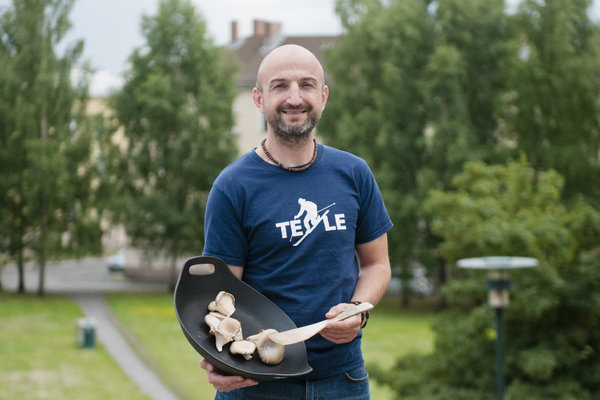
Combining research with real life change can be complicated. We know that the amount of meat and dairy that we are producing globally is unsustainable. And for this to change, research is increasingly suggesting that at least some of the change will have to come from consumer behaviour. But people like to eat meat, and many see nothing wrong with eating over 180g of meat every day (as a point of reference, a “gourmet” hamburger contains about 180g of beef). So what is to be done?
My work in this area has been focused on the food service industry, using tools to help restaurants and caterers to see the business opportunities in developing menus that have less impact on the environment and are good for their business. In simplest terms, this means using less meat and dairy. But achieving this requires more than an understanding of the environmental impact of meat. You need to account for customer preferences, food service culture, kitchen staff awareness and creativity, and, not least, an understanding how the food service industry works as a business. That’s quite a lot of asks. Or to put it in a more positive way, that’s quite a lot of opportunities for experts to collaborate.
I want to share with you some small, early-days successes I have had with restaurants and caterers in Norway, and make an informal call for collaboration from experts in different fields.
 I developed a “sustainable business toolkit” called IntoFood that has been used in a number of large canteens and smaller independent restaurants. One example is a well-known Mexican restaurant in Oslo. They sell a lot of meaty quesadillas and burritos plus a few vegetarian options, but their customers know them for their chicken, beef or pork rib burritos. We measured the carbon footprint of their menus and saw opportunities for offering lower carbon footprint options that included 50% less meat, paired with flavoursome vegetables. In other words, we thought we could achieve more by encouraging meat-eaters to buy the “less meat” options, rather than the “no meat” options. The results have been encouraging. In only 7 weeks, the restaurant saw a shift of 10% away from the “full meat” to the “50% meat” options, resulting in a climate change saving similar to the emissions produced by driving 8000km in a car.
I developed a “sustainable business toolkit” called IntoFood that has been used in a number of large canteens and smaller independent restaurants. One example is a well-known Mexican restaurant in Oslo. They sell a lot of meaty quesadillas and burritos plus a few vegetarian options, but their customers know them for their chicken, beef or pork rib burritos. We measured the carbon footprint of their menus and saw opportunities for offering lower carbon footprint options that included 50% less meat, paired with flavoursome vegetables. In other words, we thought we could achieve more by encouraging meat-eaters to buy the “less meat” options, rather than the “no meat” options. The results have been encouraging. In only 7 weeks, the restaurant saw a shift of 10% away from the “full meat” to the “50% meat” options, resulting in a climate change saving similar to the emissions produced by driving 8000km in a car.
Similarly, a catering company developed a new tapas menu range that included meat but in fact had a carbon footprint only 10% higher than their existing vegetarian tapas menu. So we could sell this to meat-eaters without asking them to give up meat. In four months, the sales shift has produced a climate change saving equivalent to about 9500km car-driving.
On one side, I see these as great successes. Both examples created a positive impact and were good for business for the restaurants and caterers. A 10% shift in customer behaviour in a short period of time is not to be sniffed at in the food industry. And we were able to use communication techniques that seemed to work – naming menu options “chef’s recommendation” or “full flavour” rather than “climate friendly” is maybe a more business savvy way for restaurants to bring sustainability into their menus. And yet, the successes also point to the scale of the challenge ahead. If small changes like this can make an impact, you also need to acknowledge that, overall, the environmental cost of the food service industry is very high indeed, and we have a long way to go before consumers are actually eating sustainably.
As a joke, we produced an infographic claiming that, from a climate change perspective, opening a new burger restaurant in Oslo would be the same as flying a carrot round the world 5 times every year. It’s daft, but the point is there, we have a long way to go.
So, I’m writing this blog to make the point that we can indeed create change, but also to say that I’d welcome collaboration from others. What we achieved with the above examples required the contribution of good research data, business knowledge, kitchen creativity, a food marketing expert, and a behavioural psychologist – and we could always use more help and input.
With IntoFood we are working to combine these areas into a usable package for the food service industry, so here’s an honest admission. I don’t have all the answers! Change requires a combination of good research, easy-to-use tools, consumer behaviour insights, and real-world common sense. If you can or would like to contribute or even just discuss, please get in touch (will@intolife.no)
If you have any thoughts about this article please share your views in the comments box below. You will need to be signed in as a member to do so. Contact us if you have any problems.







Post a new comment »